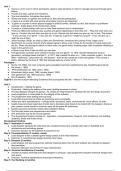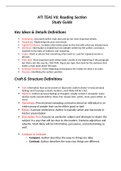Lecture notes
Computer Games Design Lecture Notes
- Institution
- The University Of Essex (UoE)
Unit 1: Basics of Game Design Definitions and Distinctions: Explains what games are, differentiating them from puzzles, toys, and stories. It includes quotes from notable figures like Katie Salen & Eric Zimmerman and Johan Huizinga. Historical Context: Describes the evolution of gaming consoles a...
[Show more]





